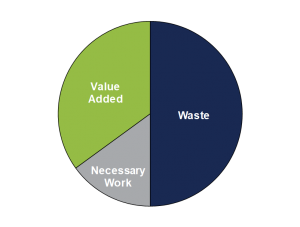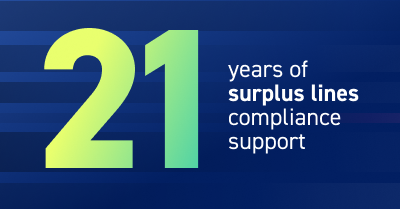Ona Kolosky serves as a Senior Operations Consultant at ReSource Pro. With insurance operations leadership experience spanning over 25 years, Ona has an impressive track record of growing high performance organizations. Ona is a Licensed Property & Casualty Agent for the State of California and is Lean Certified.
The Alignment Principle
In this series of blog posts, I’ll be talking about why Mission-Driven Management is so important for sustained business growth and profitability for the insurance industry, and how businesses get there. We’re starting things off by talking about ‘The Alignment Principle’.
What Does It Mean?
The meaning of the term ‘Mission-Driven Management’ is pretty straightforward: manage your business to support its mission. In the insurance industry, where operations are absolutely vital to fulfill any business goal, let alone the overall mission, this is especially true. Achieving success requires alignment of processes and execution to your Mission, Vision and Values.
Often times, insurance companies will say that they’re aligned this way, but upon closer inspection their process and execution are far from it. When these things aren’t aligned, they’re not supporting your mission and goals and could actually work against your business. When there is clear alignment, process and execution will drive your strategy to ensure objectives are achieved.
The importance of Alignment
Just how much can alignment or misalignment impact your business and bottom line? Tremendously. Let’s try to quantify by applying a Lean (Six Sigma) theory to this problem. The specific Lean theory in this case says that 50% of all activity is waste and only 1/3 of activity is value added. The remainder is referred to as ‘necessary work’. In our industry, this can mean tasks required due to E&O protections, compliance and so on.
It has been found that a good majority of the ‘waste’ part of the wheel is created when strategy is not aligned to how business is conducted, and the day-to-day decisions made on how time and resources are prioritized. Waste is what happens when your people may not have a clear idea of where they are headed or what they should be focused on. It is literally like throwing money away. I’m not saying that your people are spending 50% of their time scrolling through their Facebook feed like a zombie. The kind of waste I’m referring to is often hidden and reflected in things like:
- Inefficient processes and workflows
- Wrong people doing the wrong task
- Lack of standardization – everyone doing things their own way
- Inability to prioritize time and resources
Strategic thinking
In some situations, these types of issues are far more visible. Imagine an army whose goal is to take control of a particular location, and each General has their own idea of how to make that happen. Each leader is directing their soldiers with different priorities in mind, even though they’re all working toward the same goal. Without a cohesive strategy, there’s a possibility that they might accidentally win, but there would be a lot of unnecessary waste along the way. There’s also the potential of interfering with one another and tripping each other up. The same is ultimately true for insurance organizations.
So how does your insurance organization align itself and move toward more effective mission-driven management? We’ll be talking about that in our next post, starting with how your mission, vision and values should impact your processes and workflow.




